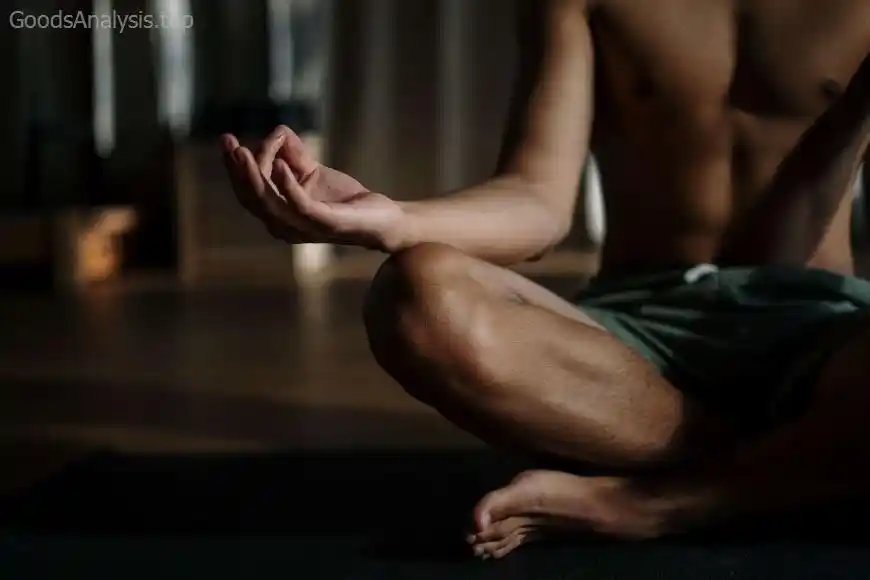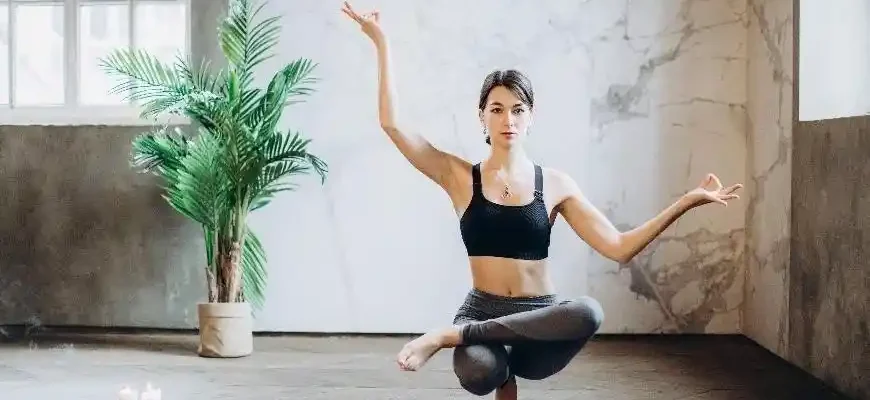Meditation has grown in popularity over the past few decades, becoming a mainstream practice for reducing stress, enhancing mental clarity, and improving overall well-being. Whether you’re 25 or 75, there’s a place for meditation in your life. But if you’re new to it, starting can seem intimidating. How do you begin? What are the best techniques? And what’s the science behind it all? As someone who’s been around the block a few times, I’m here to guide you through the process, using research-backed insights and practical advice. Let’s dive in.
The Basics: What is Meditation?
At its core, meditation is about cultivating awareness and focus. It’s the practice of calming the mind, reducing stress, and allowing for deeper mental clarity. Although there are various forms of meditation, most practices share common elements: mindfulness, breath focus, and quieting the noise in your mind.
The benefits are well-documented. According to a study published in Psychological Science, just a few minutes of meditation can reduce stress and increase your focus. Research from Harvard Medical School indicates that regular meditation can physically change your brain, improving areas involved in memory, self-regulation, and even empathy. The best part? Anyone can meditate, regardless of age, background, or experience level.
Why Should You Meditate?
Meditation isn’t just for yogis in the Himalayas. Studies show that regular meditation can have profound effects on mental and physical health. Here’s what science says:
- Reduces Stress: Research from the American Psychological Association shows that meditation can help lower cortisol (the stress hormone), reduce anxiety, and improve emotional regulation.
- Improves Focus: A study from the University of Washington revealed that those who meditate regularly show better cognitive function, including improved attention and focus.
- Boosts Emotional Well-Being: Meditation enhances the production of feel-good chemicals like serotonin and endorphins, which can help elevate mood and combat depression.
- Physical Health Benefits: Meditation can lower blood pressure, reduce inflammation, and even boost your immune system. It’s not just for the mind—it’s for your body, too.
Getting Started: The First Steps
So, you’re ready to give meditation a try. What’s the best way to begin? Let’s break it down step-by-step:
- Set a Clear Intention
Before you even sit down, think about why you want to meditate. Do you want to reduce stress? Increase focus? Improve your mood? Having a clear purpose helps keep you motivated and focused throughout your practice. - Find a Comfortable Space
Meditation doesn’t need to happen on a mountaintop or in a special meditation center (though that sounds lovely). Find a quiet space where you can sit comfortably without distractions. It could be a corner of your living room, a park bench, or even your bedroom. Comfort is key. - Start with Short Sessions
Don’t worry about meditating for hours right away. As a beginner, it’s better to start small—about 5 to 10 minutes is plenty. Gradually increase the time as you get more comfortable. - Focus on Your Breath
One of the simplest and most effective meditation techniques is breath-focused meditation. Close your eyes and take slow, deep breaths. Focus all your attention on the sensation of the air moving in and out of your body. If your mind wanders (and it will), gently bring your focus back to your breath. It’s all about practice and patience. - Use Guided Meditations
If you find it hard to meditate on your own, don’t hesitate to use a guided meditation. There are plenty of free apps and YouTube videos that walk you through the process. They’ll help you stay on track and deepen your practice. - Be Consistent
Meditation is like exercise—its benefits come from consistent practice. Aim to meditate at the same time each day. Even a few minutes can have a positive impact on your well-being.
Common Challenges and How to Overcome Them
Meditation isn’t always easy, especially when you’re just starting. Here are a few challenges that beginners commonly face, along with ways to overcome them:
- Restlessness: It’s normal to feel restless or uncomfortable when you first start meditating. Your mind might be racing with thoughts, and your body may itch or feel stiff. The key is not to fight these feelings but to acknowledge them without judgment. Over time, they will fade as you build your meditation muscles. Solution: Try body scan meditation or gentle stretches before you sit down to help ease physical discomfort.
- Mind Wandering: Your mind will wander—guaranteed. Thoughts, to-do lists, memories—all kinds of distractions will arise. It’s frustrating at first, but it’s part of the process. Solution: When your mind drifts, gently guide it back to your breath or mantra without criticism. The more you practice, the easier it becomes to refocus.
- Impatience: Many beginners expect instant results. But meditation is a practice, not a quick fix. Solution: Be patient with yourself. Give yourself permission to grow at your own pace. Celebrate small wins, like staying focused for a full minute!
- Physical Discomfort: Sitting still for long periods can be hard, especially if you’re not used to it. Solution: Try meditating lying down or sitting in a chair. The goal is to be comfortable enough to relax and focus without causing strain.

Advanced Tips for Deepening Your Practice
Once you’ve mastered the basics, there are plenty of ways to deepen your meditation practice. Here are a few advanced tips:
- Try Different Techniques: Beyond breath-focused meditation, you can explore other forms like loving-kindness meditation (Metta), transcendental meditation, or mindfulness meditation. Each has its unique approach but the same goal: fostering inner peace and clarity.
- Mindful Movement: Yoga or Tai Chi can complement your meditation practice by integrating mindful movement with breathing. This helps release tension in the body and improves focus.
- Meditate in Nature: If you’re feeling stuck or disconnected, try meditating outdoors. Nature provides a calming backdrop that enhances your ability to focus and relax.
- Journaling: After meditation, take a few minutes to journal. Write down any insights, emotions, or thoughts that came up during your session. This can help you track your progress and deepen your self-awareness.
Real-Life Perspectives on Meditation
It’s always valuable to hear from others who have incorporated meditation into their lives. Here are a few personal insights from a diverse group of people on the topic:
- Maya, 28, India:
“I started meditating to manage my anxiety. It’s been life-changing. At first, I struggled with sitting still, but over time, I’ve noticed that I’m more focused and less reactive. Meditation has become a daily ritual for me now, even if it’s just for 10 minutes.” - David, 53, USA:
“I’ve always been skeptical about meditation, but after a heart attack and some lifestyle changes, I decided to give it a shot. I can honestly say it’s helped me lower my blood pressure and feel more grounded. I use a guided meditation app, which makes it easier to stay on track.” - Yuki, 62, Japan:
“Meditation has been part of my life for decades, but I didn’t always stick with it. Now, in my 60s, I find that regular meditation helps me stay calm, even with the stress of aging. It’s a small moment of peace in my day, and it’s become a necessity for my mental health.” - Liam, 34, UK:
“I was always curious about meditation but didn’t know where to start. I found that using a few minutes in the morning to focus on my breath really helps me center myself before the day gets hectic. It’s not always easy, but it’s definitely worth it.” - Sofia, 45, Brazil:
“I meditate because it helps me deal with chronic pain. It’s a simple tool that I can use at home. My mind is calmer, and my body feels a bit more relaxed too. It’s not a cure, but it certainly helps manage things better.”
Final Thoughts
Starting a meditation practice can feel intimidating at first, but with patience and consistency, it can be a deeply rewarding experience. Remember, there’s no “perfect” way to meditate—just find what works for you and stick with it. Meditation is about being present, not perfect. And the more you practice, the more you’ll experience the wide-ranging benefits it offers.
So, go ahead, close your eyes, take a deep breath, and begin your journey toward a calmer, clearer mind. You’ve got this.
FAQs
How long should I meditate as a beginner?
Start with 5-10 minutes and gradually increase the time as you get more comfortable.
Can I meditate while lying down?
Yes! If sitting is uncomfortable, try lying down or sitting in a chair. The key is finding a comfortable position that allows you to focus.
What if my mind keeps wandering?
That’s completely normal. Gently guide your attention back to your breath or mantra. The more you practice, the easier it becomes to stay focused.
Is meditation suitable for everyone?
Yes, meditation is accessible to people of all ages and backgrounds. However, if you have a history of severe mental health conditions, it’s best to consult with a professional before starting









